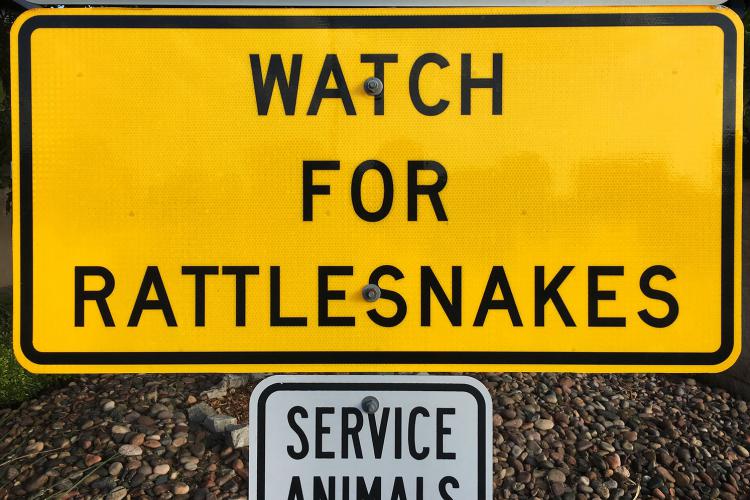
Before you get your toddler all dressed up in his Sunday best and drop him into a patch of bluebonnets for a spring photo, don’t forget that it’s also springtime for other creatures.
“When the temperature goes up, snakes start to get more active and we start to see the number of people who get bitten go up, too,” said Dr. Todd Phillips, MD, Medical Toxicologist at JPS Health Network. “Snakes are going to be places where they can find cover and they’re going to be places where they can find food. So, when people are in those kinds of places, they need to be cautious.”
Some examples of places where snakes are likely to be found include tall vegetation like weeds and grass, piles of sticks or firewood, thick shrubbery or in closed off spaces like hollow tree stumps or sewer drain pipes. Snakes also tend to live in and around barns or sheds where they can find mice and other small rodents to eat or near water where they can hunt frogs and toads. Phillips said snakes usually prefer to avoid humans whenever possible. But, if you step on one or make it feel as if it’s cornered, that’s when a strike is likely.
Several types of venomous snakes can be found in Texas. They include rattlesnakes, copperheads, coral snakes and cottonmouths which are also known as water moccasins. If you’re bitten, don’t panic. Call 911 or head to the nearest emergency room. While people often think a snakebite means you have only seconds left to live, doctors say that’s not really the case.
“In the United States, snakebite deaths are very rare,” said Phillips. “But, if the bite isn’t taken care of, we see problems in the surrounding tissue and the patient can have problems with their blood. So, it’s important to get it looked at – even if you don’t believe the snake that bit you was venomous. With some basic blood work we can find out exactly what we’re dealing with.”
While some people err by not getting snakebites inspected by a doctor, others do more damage than good trying to treat the wound themselves. Here are some snakebite mistakes to be avoided:
- Don’t try to suck out the venom from a bite suffered by yourself or someone else
- Don’t try to cut the bite to try to drain the venom
- Don’t waste money on snakebite kits available at sporting goods stores, Phillips said they don’t help
- Don’t put a tourniquet on the limb which was bitten
- Don’t put ice or anything else on the wound before a doctor can look at it
- Don’t try to catch the snake or bring it with you to the hospital. Even if it’s dead, the reptile can reflexively bite for hours, potentially exposing yourself or others to danger
“People think that they have to catch the snake and show it to the doctor to make sure that they get the right treatment,” Phillips said. “We had a patient bring a snake to the Emergency Department last year and it created quite a stir. Don’t do that. If you can get a photo of the snake that bit you without risking another bite, that’s fine. Otherwise, a description is usually adequate.”
Phillips said fear of a bite is no reason not to enjoy the outdoors. People just need to be aware we’re sharing nature with other creatures and watch their step when they’re in a place where their likely to encounter a snake.
